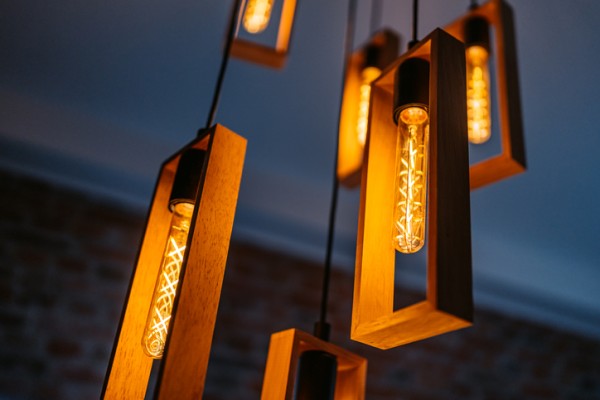
When you’re renovating, lighting decisions go far beyond brightness. The type of light you choose affects how paint colours appear, how textures are perceived and whether a room feels warm and inviting or flat and cold. This comes down to colour reproduction — the ability of a light source to show colours accurately.
In this guide, we’ll explain how colour reproduction works, what to look for when choosing globes and how to create the right lighting for each part of your home.
What is colour reproduction?
Colour reproduction is a measure of how true-to-life colours appear under a particular light source. The most common way to assess this is through the colour rendering index (CRI), which rates a light on a scale from 0 to 100. The higher the CRI, the more accurately the light will show colours, with daylight sitting at 100.
For residential spaces, a CRI of 90 or above is considered excellent. Lower CRI lights can make whites look yellow, skin tones appear washed out and coloured surfaces look dull.
Why it matters in a renovation
During a renovation, you’re likely choosing new paint colours, finishes, tiles, benchtops and cabinetry. These materials are selected in natural daylight or showroom conditions — but once installed, they’ll be seen under your home’s artificial lights.
Poor-quality lighting can distort the look of your finishes. For example:
- A soft grey wall may appear beige under a low-CRI globe
- Timber flooring can look lifeless without proper light rendering
- Artwork or textured materials may lose contrast and vibrancy
High-CRI lighting ensures that the colours you carefully selected actually look the way you intended once the renovation is complete.
How to choose the right globes
When shopping for light globes, you’ll need to consider both CRI and colour temperature (measured in Kelvin). The CRI tells you how accurately colours will appear. Colour temperature influences the mood and tone of a room.
| Room | Colour temp (K) | CRI rating | Notes |
|---|---|---|---|
| Living areas | 2,700–3,000 | 90+ | Warm tones, suitable for relaxation |
| Kitchens/bathrooms | 3,500–4,000 | 90+ | Balanced light for visibility and style |
| Home offices | 4,000–5,000 | 85+ | Crisp, neutral light for focus |
You can learn more in our article on how to choose LED light globes and explore the impact of colour tones in light globes and colour temperatures.
Accent lighting and feature areas
If you’re highlighting artwork, textured walls, or feature joinery, it’s worth investing in very high-CRI lighting (95 or higher). These lights enhance colour contrast and make details pop, which is especially effective when paired with adjustable spotlights or recessed accent fittings.
Our article on how to plan your lighting explains how to combine accent, ambient and task lighting for a complete result.
Natural and artificial light working together
Artificial lighting should complement the natural light that enters your home. South-facing rooms may already have soft daylight, while darker zones will need artificial support throughout the day.
If you’re looking to increase natural light as part of your renovation, consider adding a skylight or roof window. These not only brighten your home but can reduce your reliance on artificial lighting. See our guide to skylights and roof lanterns for ideas on maximising daylight.
Use lighting controls to fine-tune ambience
Modern lighting systems allow you to adjust not just brightness, but colour tone. Smart LED globes and tunable white fittings can shift from warm to cool light depending on time of day or activity — all controlled through a wall switch, app or voice assistant.
Dimmers and motion sensors can also play a part, particularly in multi-use areas or homes aiming for improved energy efficiency. Read our article on lighting controls and switches for more on how to integrate controls into your setup.
Plan ahead when renovating
To get the most out of your lighting and colour reproduction:
- Test your lighting – Try sample globes with different CRIs and colour temperatures before committing
- Coordinate finishes and lighting early – Discuss light placement and type before finalising cabinetry or wall colours
- Consider layering – Use a mix of ambient, task and accent lighting for flexibility
- Pre-wire for upgrades – If you’re not installing smart lighting now, wiring for it means easier upgrades later
A well-planned lighting scheme not only makes your home more enjoyable to live in, but helps you get the best out of every design decision you’ve made.





